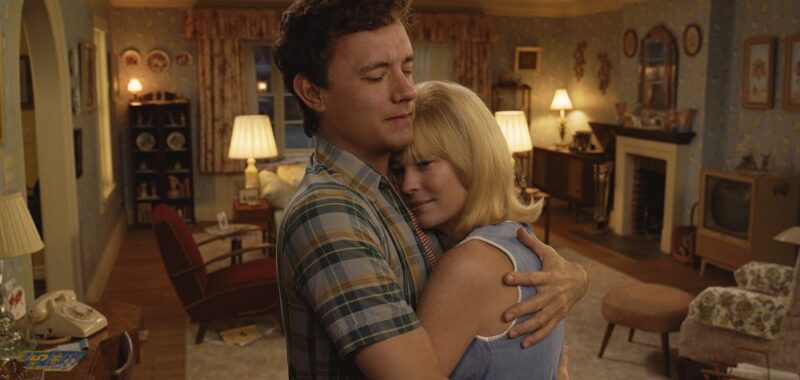
Tom Hanks and Robin Wright TriStar Pictures
The use of AI technology to de-age actors has become a popular tool in filmmaking over the past few years — and Tom Hanks and Robin Wright’s upcoming film Here is just the latest example.
The duo, who are reuniting after costarring in 1994’s Forrest Gump, portray Richard and Margaret in the romantic drama, a couple who go from high school sweethearts to spouses. Hanks, 68, and Wright, 58, will portray the characters through decades of their lives, from their teen years well into their 80s.
So, how did director Robert Zemeckis make that happen? The technology used to manipulate Hanks and Wright’s faces is called Metaphysic Live, which is a real-time face-swapping effect AI to create synthetic media experiences for entertainment, marketing and the metaverse. But while AI was integral to bringing Here to life, Zemeckis said that the characters’ physical changes weren’t all done by computer.
“It only works because the performances are so good,” the Forrest Gump director told Vanity Fair in June after a first look at the film was released. “Both Tom and Robin understood instantly that, ‘OK, we have to go back and channel what we were like 50 years ago or 40 years ago, and we have to bring that energy, that kind of posture, and even raise our voices higher. That kind of thing.”
Here is also taking chances in other areas — the story is told from a single perspective that “never changes, but everything around it does.”
“It’s actually never been done before,” Zemeckis revealed. “There are similar scenes in very early silent movies before the language of montage was invented. But other than that, yeah, it was a risky venture.”
There is, however, plenty of media playing around with de-aging technology. Viewers were all shook up after a 2022 episode of America’s Got Talent showed Elvis Presley “performing” with backup singers that had the digital faces of Sofía Vergara and Heidi Klum. Martin Scorsese’s The Irishman, meanwhile, features Robert De Niro, Al Pacino and Joe Pesci in various decades of their lives.

Tom Hanks and Robin Wright TriStar Pictures
De Niro in particular — who was 76 at the time of shooting — appears at ages 24, 36, 41, 42, 47 and 55 in the Oscar-winning crime drama, which follows 1950s truck driver Frank Sheeran (De Niro) as he gets involved with Russell Bufalino (Pesci) and his Pennsylvania crime family. As Sheeran climbs the ranks to become a top hit man, he also goes to work for Jimmy Hoffa (Pacino), a powerful Teamster tied to organized crime.
“The film takes place from 1949 to 2000, and it goes back and forth in time continuously,” Scorsese told Wired in 2019. “The problem is, by the time I was ready to make the film, Bob De Niro, Al Pacino and Joe Pesci can no longer play these characters younger in makeup.”
That’s where Pablo Helman came in. The veteran Industrial Light & Magic visual effects supervisor told Scorsese he could execute the directorial vision better than makeup and practical effects. To prove it, he asked De Niro to reshoot a scene from 1990’s Goodfellas.
Helman’s test proved that his technology would allow Scorsese to film normally while simultaneously capturing any data the ILM team would need to make De Niro’s Irishman character — or any other character — whatever age they needed to be in any given moment. After filming wrapped, Helman then explained he would finish up the work in postproduction using software called Flux, which combines the infrared information with the images from the main camera to create masks on each actor’s face.
And the rest, they said, was history. “That greenlit the movie,” Helman told Wired. He agreed, however, that the success didn’t just stem from the technology. “The most important thing about the technology we developed,” he said, “has to do with the nuances in the performances.”


